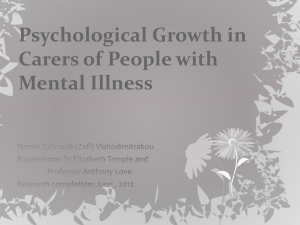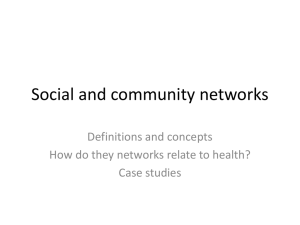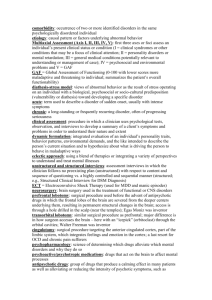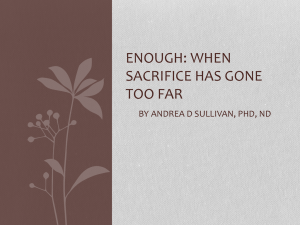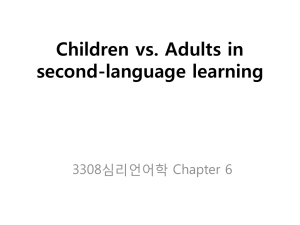Formulation 17th Oct 2014 - the Peninsula MRCPsych Course
advertisement
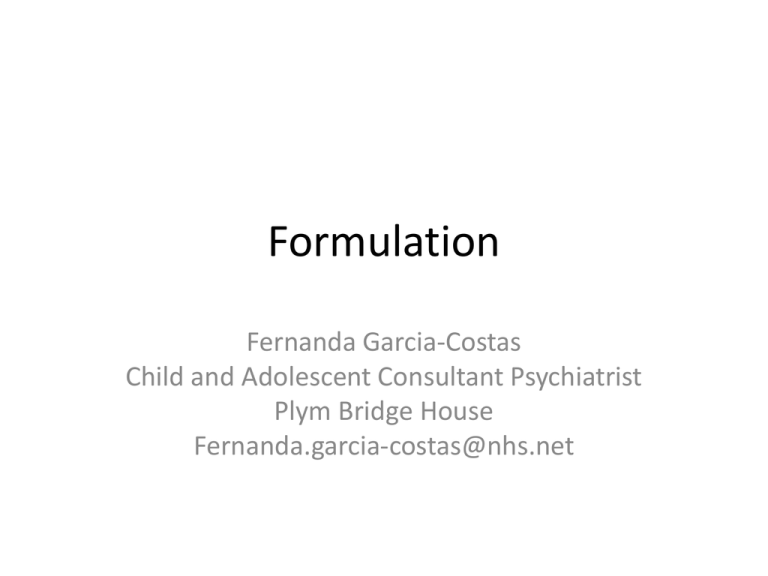
Formulation Fernanda Garcia-Costas Child and Adolescent Consultant Psychiatrist Plym Bridge House Fernanda.garcia-costas@nhs.net Includes: • Diagnostic features • Differential diagnosis • Aetiological factors: – Predisposing (increase vulnerability) – Precipitating (trigger onset of disorder) – Perpetuating (maintain symptoms after precipitants have disappeared) – Protective factors • Prognosis • Aetiology: BIOLOGICAL PRED PPT PERP PSYCHOLOGICAL SOCIAL Biological • Predisposing: – Obstetric complications – Genetic loading – Head injuries – Drug and alcohol misuse – Physical illness – Gender – Cognition Biological • Precipitant: – Non compliance – Drug and alcohol – Physical illness – Head injury Biological • Perpetuating: – In addition to the irreversible genetic loading and obstetric damage – Continued non compliance – Drug and alcohol – Physical illness Psychological • Predisposing: – Inadequate parenting and early trauma/attachment • • • • Poor self-esteem Poor impulse control Difficulties with relationships Dysfunctional beliefs – Evidence of maladaptive behaviour • • • Drug and alcohol Excessive/no relationships Offending behaviour. Psychological • Precipitant: – Trauma (real or imagined) reignites dysfunctional beliefs from previous similar experiences – Specific psychological mechanisms adopted: • • • • Depression: denial, turning against one self Paranoia: projection, splitting OCD: isolation, magical thinking/undoing Phobia: displacement Psychological • Perpetuating: – Continued ingrained maladaptive thoughts and behaviour. Social • Predisposing: – Poverty – Divorce/parental discord – Overcrowding – Unemployment – Isolation – Any cause of stress: finances Social • Precipitant: – Life event: new birth in the family, moving house/school. Social • Perpetuating: – Decreased functioning which exacerbates or causes any of the above plus others. Prognosis • Short term: current episode – Good or poor depending on likelihood of remission. – Determined by the natural history of the disease (episodic/chronic) and the past psychiatric history. • Long term: Likelihood/frequency of recurrence – Dependent on: • Natural history • Past psychiatric history • Bio/Psycho/Social components of the aetiology.




